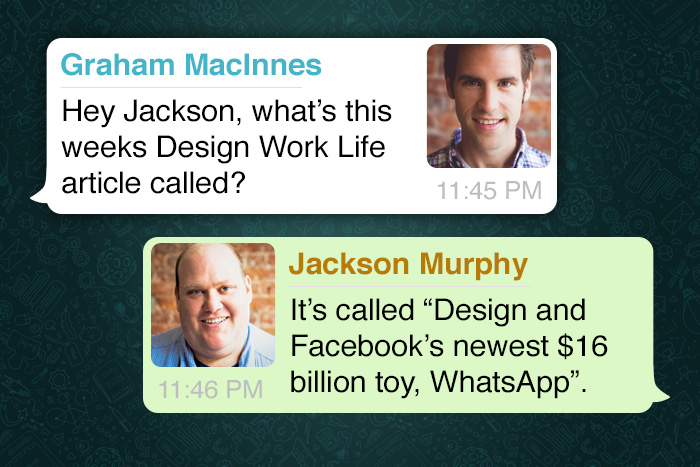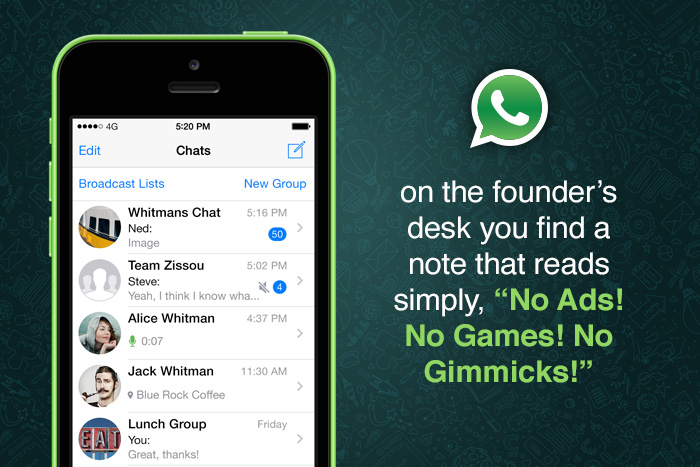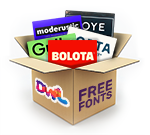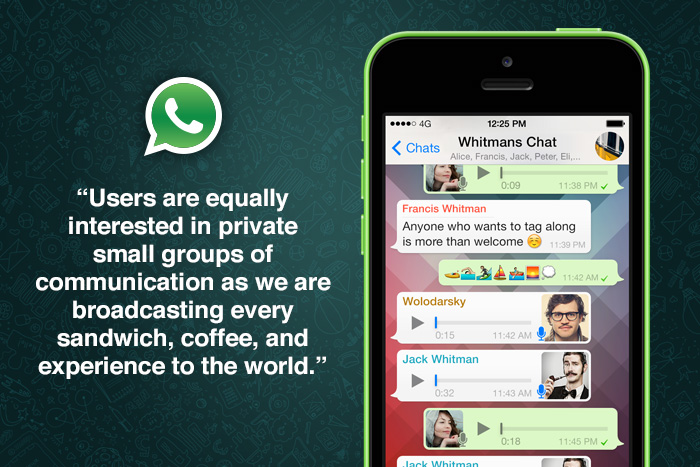
Last week Facebook bought popular messaging company WhatsApp for $16 billion (Yes with a b), giving the social media company yet another crown jewel in mobile application domination after Instagram and Facebook itself.
It was shocking that WhatsApp would cost this much given that Google was able to pick up Nest for a mere $3.2 billion and Facebook only needed to shell out $1 billion for Instagram just two years ago, despite there being seemingly thousands of competitors to choose from.
But unlike Instagram, WhatsApp has paid very little attention to interface design or branding. Fast Co. Design asked, “Why Facebook Paid $16 billion for An Ugly, Primitive App.” And BuzzFeed wondered aloud, “It’s a primitive-looking app — maybe even ugly — and it contains no ads. It associates with your phone number and circumvents texting charges; it only takes a few friends to join before its crude, simple appeal is obvious.”
Is the question, why buy an ugly app, or why an ugly app has over 450 million users? Others might wonder still that if it can get 450 million users looking like this, how can having the best looking app matter? I’m sure Jonathan Ive is rolling his eyes from deep inside Apple headquarters at the thought of success coming despite magical design.

To be fair, the app isn’t technically ugly, it just simply lacks design. It’s a virtual blank canvas—one that is so dead simple to use, that it seems anyone can, within seconds. And use it, they do. 70% of WhatsApp users are using it like crazy, sending 500 million pictures back and forth every day, and on average over 1,200 messages a month.

Get a Free Font Every Week
Enter your email to receive a new FREE font every Friday.
On the other hand there certainly is no shortage of concept designs out there aiming to improve upon the app’s general look. But it all has that certain “Googleness” to its sparse utility. There isn’t any fluff and there aren’t any superfluous features. Its mission is singularly, simply, hyper-focused. Clearly, Facebook didn’t buy the app for its design.
On WhatsApp’s blog they devoted their whole existence to, “building a cool product used globally by everybody. Nothing else mattered to us.” In fact, on the founder’s desk you find a note that reads simply, “No Ads! No Games! No Gimmicks!”

The most interesting thing to come out of this purchase is Facebook’s conclusion, or at least hedging bet, that users are equally as interested in private small groups of communication as we are in broadcasting every sandwich, coffee, and experience to the world. As Jenna Wortham of the New York Times sees it,
“…the popularity of private-messaging applications like WhatsApp, which has more than 450 million users, suggests that despite all the technological advances in recent decades, people still crave to communicate in small groups and often just with one other person at a time.”
The lesson here is that giving users what they want by creating an effortlessly simple user experience is just as important—if not more—as looking good.

